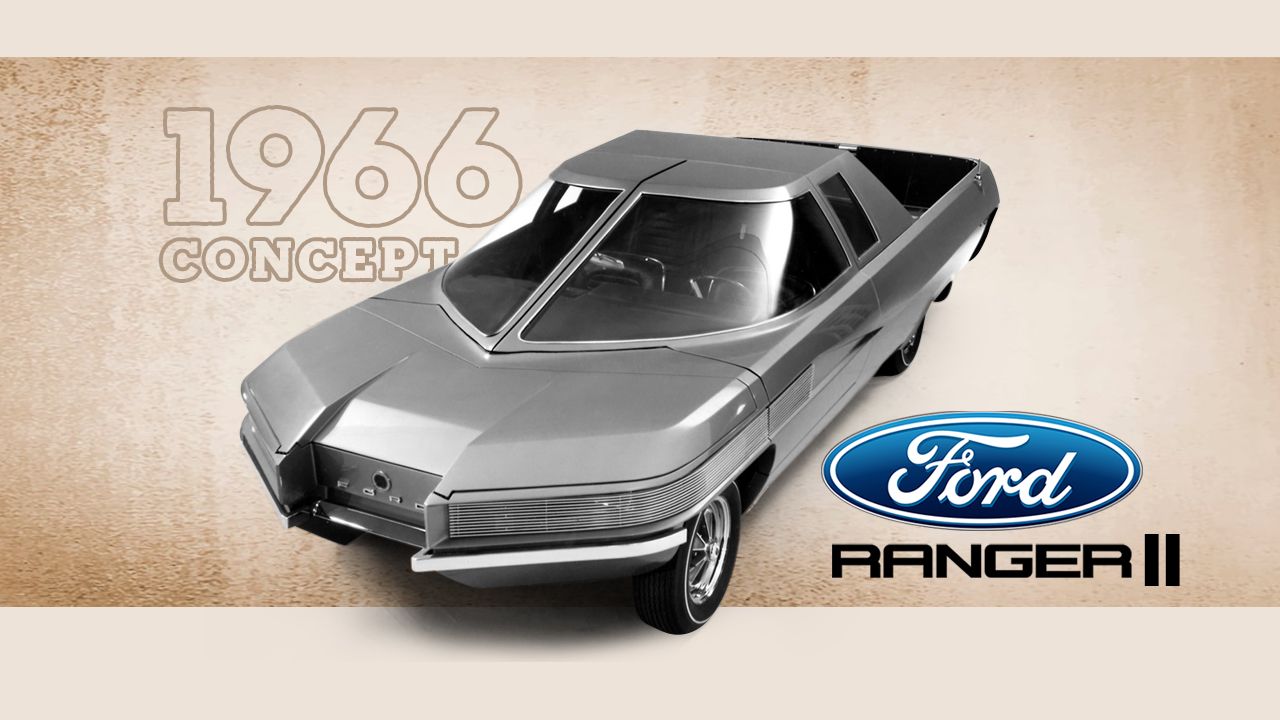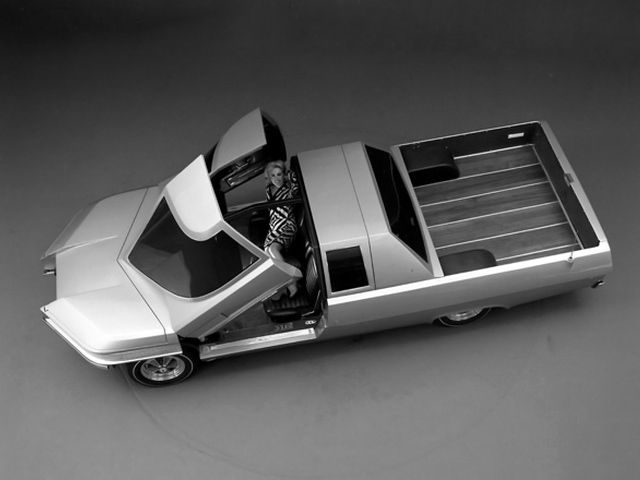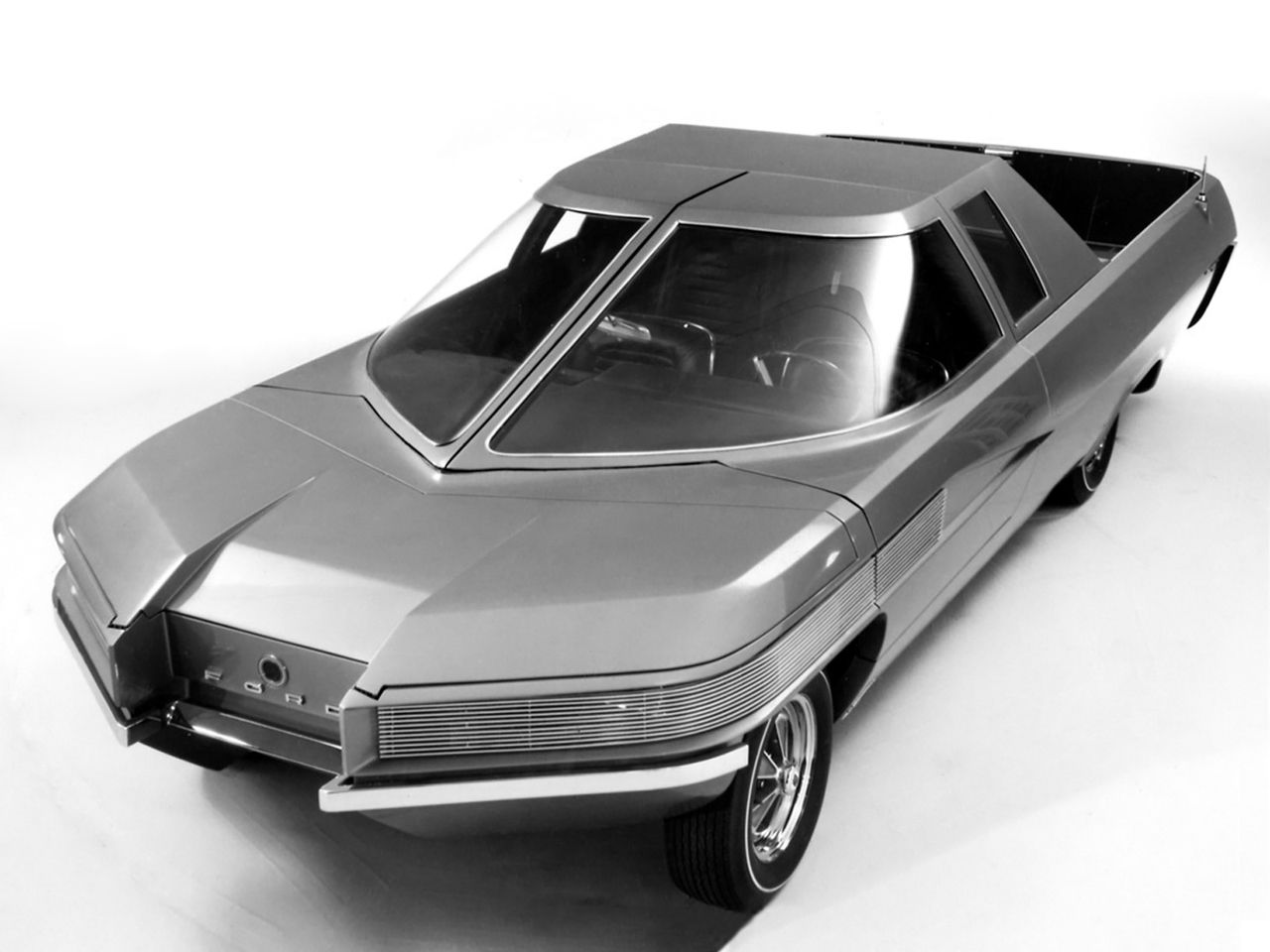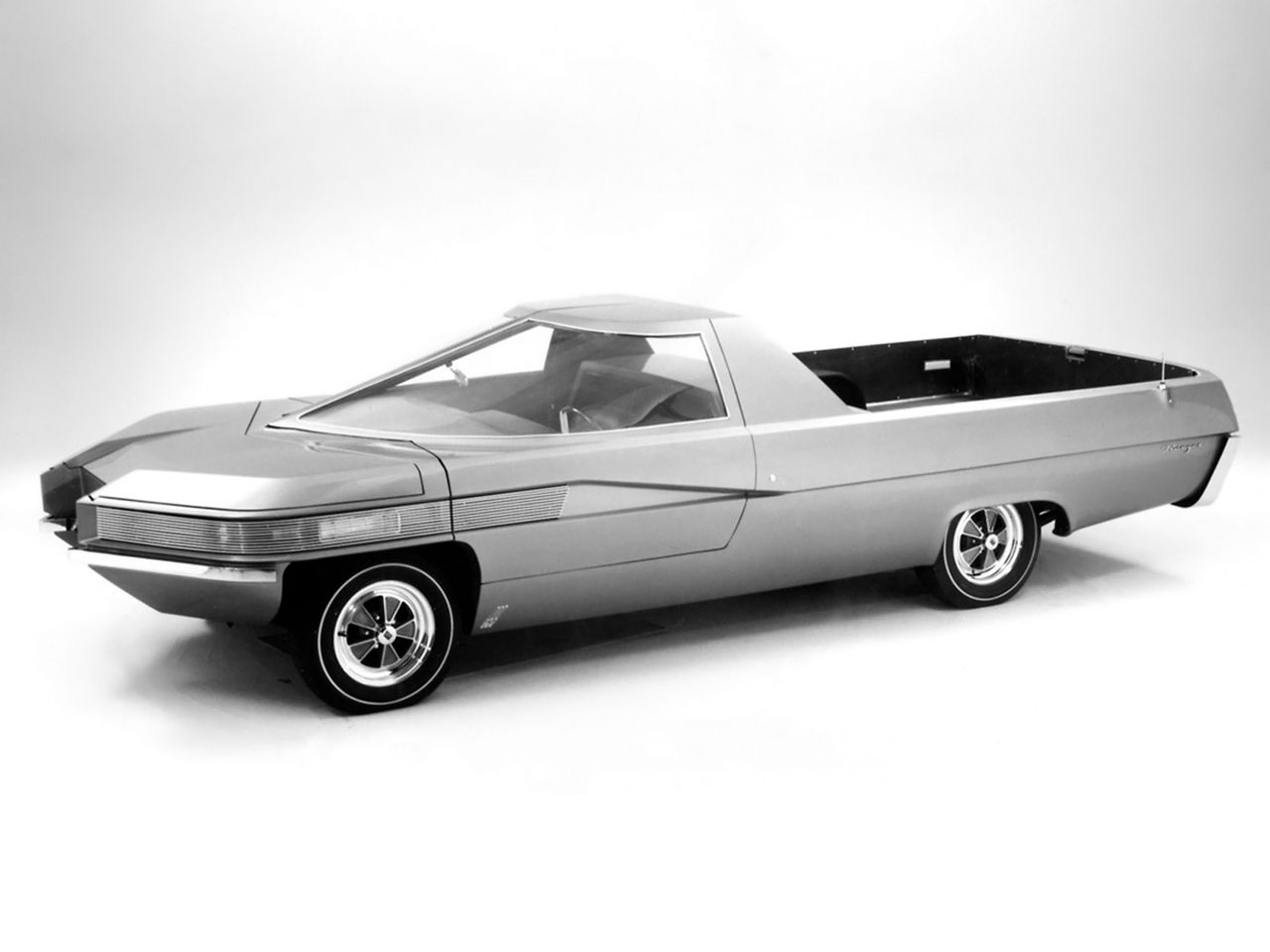When you think of 1960s pick-up trucks, you tend to think of the boxy, utilitarian work horses that serve their owners faithfully. Until the introduction of trucks like the Dodge Little Red Express, trucks were seen solely as utilitarian vehicles, with not much in the way of comfort and performance. In 1966, however, Syd Mead, a neo-futuristic artist responsible for the designs in Tron AND Blade Runner to name a few, designed a bonkers Ford pick-up truck that looked like nothing else.
A pick-up truck that isn’t based on a pick-up truck chassis
Underpinning the 1966 Ford Ranger II Concept is the chassis of a 1963 Ford Galaxie Country Squire. Its designer, Syd Mead is described as "the artist who illustrates the future" and apparently, he nailed it with his Ford pick-up truck concept. You only need to look at the new Hyundai Santa Cruz. The idea of the concept truck was to boast driving dynamics, similar to a passenger car, without sacrificing the utility of a traditional pick-up truck, like the Ford Ranchero and Chevrolet El Camino.
The Ford Ranger II boasts an exciting powerplant
Powering the futuristic pick-up truck is a 390 cubic-inch Ford FE tri-power V-8. The version with three carburetors is rated at 330 horsepower at 5,000 RPM and 427 pound-feet (579 Nm) at 3,200 RPM. The same unit, in one configuration or another, was used on various Ford models between 1961 and 1971, including some versions of the Ford Mustang. In the Ranger II Concept, the V-8 is mated to a SelectShift, Cruise-O-Matic, three-speed automatic, which sends power to the rear wheels only.
1966 Ford Ranger II Concept specifications
|
Engine |
390 cubic-inch Ford FE tri-power V-8 |
|---|---|
|
Power |
330 HP @ 5,000 RPM |
|
Torque |
427 Lb-FT @ 3,200 RPM |
|
Transmission |
SelectShift, Cruise-O-Matic, three-speed automatic |
The F-117 Nighthawk's design may have come from the Ranger II
While we cannot be sure what Syd Mead’s inspiration for the design was, the canopy-style cockpit resembles that of the F-117 Nighthawk stealth bomber. The twin-piece canopy stretches to the truck’s side sills, allowing for easy access as if it has conventional doors.
As practical as a Ford F-250
The 1966 Ford Ranger II Concept measures 216 inches (5 486.4 mm) in length and sits on a 120-inch (3,048 mm) wheelbase. It also measures 57 inches (1 447.8 mm) in height and 84 inches (2,133.6 mm) in width. The truck bed measures six feet (1,828.8 mm) in width and up to eight feet (2,438.4 mm) in length.
1966 Ford Ranger II Concept exterior dimensions
|
Length |
216 inches (5,486.4 mm) |
|---|---|
|
Wheelbase |
120 inches (3,048 mm) |
|
Height |
57 inches (1,447.8 mm) |
|
Width |
84 inches (2,133.6 mm) |
Flexible interior
Inside, the 1966 Ford Ranger II Concept features a flexible interior that could alter between two different configurations. Normally, the truck has a bench seat for three at the front, but with the press of a button, the rear cab area extends backward and a “filler section with a window popped into position. This reveals two extra seats, turning the futuristic truck into a five-seater.
This, however, was at the expense of bed length. Still, the Ford Ranger II Concept could be configured, depending on whether you need more seating space or a bigger cargo area. The truck was fully-operational and featured A/C, radio, and other amenities.
The project died after its creator departed from the project
The 1966 Ford Ranger II Concept is a classic case of a vehicle that’s way ahead of its time. When its creator, Syd Mead, departed from the project, Ford took the liberty of adding the extra cab module and took the concept to various auto shows, over the next few years. After that, the Ranger II vanished, but not before some of its design cues made it onto future Ford Ranchero models.
It’s mind-boggling to think how Syd Mead’s design could have influenced pick-up trucks, had the Ranger II made it to production. Sadly, its story ended the same way as many other concept cars, such as the Ford Roush GN34, gathering dust in some “prototype stash” warehouse.




